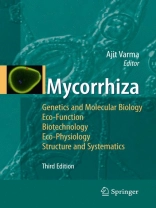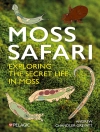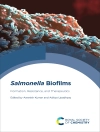Innehållsförteckning
State of the Art.- Mycorrhizal Fungi: What We Know and What Should We Know?.- Diversity, Function and Potential Applications of the Root-Associated Endophytes.- Structure, Extent and Functional Significance of Belowground Arbuscular Mycorrhizal Networks.- Foraging for Resources in Arbuscular Mycorrhizal Fungi: What is an Obligate Symbiont Searching for and How is it Done?.- Global Diversity Patterns of Arbuscular Mycorrhizal Fungi–Community Composition and Links with Functionality.- Mycorrhiza Helper Bacteria.- Genetics and Molecular Biology.- Genomic Organization and Mechanisms of Inheritance in Arbuscular Mycorrhizal Fungi: Contrasting the Evidence and Implications of Current Theories.- Ectomycorrhiza and Water Transport.- Hypogeous Pezizaceae: Physiology and Molecular Genetics.- Evaluation of the Possible Participation of Drought-induced Genes in the Enhanced Tolerance of Arbuscular Mycorrhizal Plants to Water Deficit.- Eco-Function.- The Beneficial Effect of Mycorrhizae on N Utilization by the Host-Plant: Myth or Reality?.- Ion Dynamics During the Polarized Growth of Arbuscular Mycorrhizal Fungi: From Presymbiosis to Symbiosis.- Arbuscular Mycorrhiza in Metal Hyperaccumulating Plants.- Mycorrhizal Fungi and Other Root Endophytes as Biocontrol Agents Against Root Pathogens.- The Biocontrol Effect of Mycorrhization on Soilborne Fungal Pathogens and the Autoregulation of the AM Symbiosis: One Mechanism, Two Effects?.- Resource Partitioning Between Extraradical and Intraradical AM Fungal Mycelium.- Ozone Stress and Ectomycorrhizal Root–Shoot Signaling.- Biotechnology.- From Production to Application of Arbuscular Mycorrhizal Fungi in Agricultural Systems: Requirements and Needs.- Agronomic Management of Indigenous Mycorrhizas.- AM Inoculation in Tropical Agriculture: Field Results.- The International Market Development for Mycorrhizal Technology.- Why and How Using Micropropagated Trees rather than Germinations for Controlled Synthesis of Ectomycorrhizal Associations?.- Biotechnology and Cultivation of Desert Truffles.- The Fungal Transmitted Viruses.- Eco-Physiology.- Intertwined Existence: The Life of Plant Symbiotic Fungi in Agricultural Soils.- Macroecology of Microbes – Biogeography of the Glomeromycota.- Arbuscular Mycorrhiza of Endangered Plant Species: Potential Impacts on Restoration Strategies.- Community Developmental Patterns and Ecological Functions of Ectomycorrhizal Fungi: Implications from Primary Succession.- Colonization of Plant Roots by Pseudomonads and AM Fungi: A Dynamic Phenomenon, Affecting Plant Growth and Health.- In vitro Cultures Open New Prospects for Basic Research in Arbuscular Mycorrhizas.- Interactions of Piriformospora indica with Medicinal Plants.- In vivo Assessment of Stress Impact on Plant’s Vitality: Applications in Detecting and Evaluating the Beneficial Role of Mycorrhization on Host Plants.- Structure and Systematics.- Edible Mycorrhizal Fungi: Identification, Life Cycle and Morphogenesis.- Arbuscular Mycorrhiza in Physiological and Morphological Adaptations of Mediterranean Plants.- Novel Symbiotrophic Endophytes.- Frankia Nodulation, Mycorrhization and Interactions Between Frankia and Mycorrhizal Fungi in Casuarina Plants.
Om författaren
Ajit Varma is also series editor of our series ’Soil Biology’.












